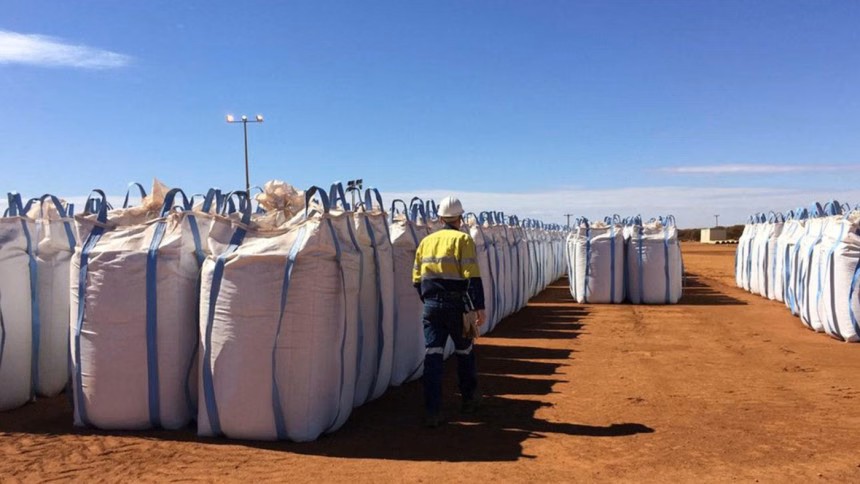Malaysia Seeks China’s Help to Boost Rare Earths Processing

Related Articles
Malaysia is stepping up efforts to become a key player in the global rare earths industry, announcing that China is ready to provide technical and technological assistance. However, Beijing has made it clear that partnerships should involve only government-linked companies (GLCs), reflecting its cautious stance on sharing advanced technology.
Why Rare Earths Are Crucial for Malaysia
Rare earth elements are vital for producing semiconductor chips, electric vehicles (EVs), renewable energy technologies, and military equipment. With demand rising worldwide, Malaysia aims to develop its rare earths mining and processing capacity, reducing dependency on foreign suppliers while capitalizing on the booming market.
Currently, Malaysia is home to a major processing plant in Pahang, operated by Australia’s Lynas Rare Earths Ltd., the largest rare earths company outside China.
China’s Rare Earths Dominance
China is the world’s largest miner and processor of rare earths, holding a near monopoly in advanced processing technology. Recently, Beijing tightened export controls to safeguard its industry.
During a visit to Kuala Lumpur in April, President Xi Jinping assured Malaysia of China’s readiness to cooperate. However, he insisted that only state-linked Malaysian firms should be part of the deal to protect Chinese technology.
Malaysia Rare Earth Deposits
According to a 2019 estimate by the Minerals and Geosciences Department, Malaysia holds around 16.1 million metric tons of rare earth reserves.
To prevent resource exploitation, Malaysia has banned raw rare earth exports, allowing only processed materials to be shipped abroad. At the same time, strict environmental rules prevent mining in forests, reserves, and sensitive ecosystems.
Opportunities and Challenges
If Malaysia succeeds in blending Chinese expertise with its existing partnerships, it could become the only country with both Chinese and Western processing technology. This would significantly boost its global credibility and attract investors.
Yet, challenges remain:
- Balancing economic growth with environmental protection
- Avoiding overreliance on China while maintaining ties with Western partners
- Ensuring sustainable mining policies for long-term industry growth
What This Means for the Future
Malaysia is positioning itself as a rare earths processing hub at a time when global demand for critical minerals is skyrocketing. With both China and Lynas already involved, the country could play a strategic role in diversifying global supply chains, especially as nations seek alternatives to Chinese dominance.
FAQs on Malaysia’s Rare Earths Development
Q1: Why is Malaysia banning raw rare earth exports?
To ensure local industries gain value and to protect against resource exploitation, Malaysia only allows processed rare earths exports.
Q2: How much rare earth does Malaysia have?
As of 2019, Malaysia has an estimated 16.1 million metric tons of rare earth deposits.
Q3: Why does Malaysia need China’s help?
China leads in rare earth separation and processing technologies, which Malaysia lacks. Cooperation could speed up local industry growth.
Q4: What makes Malaysia unique in this industry?
Malaysia hosts both Western (Lynas) and potentially Chinese technology, making it a rare global case of dual-source processing expertise.
Malaysia is stepping up efforts to become a key player in the global rare earths industry, announcing that China is ready to provide technical and technological assistance. However, Beijing has made it clear that partnerships should involve only government-linked companies (GLCs), reflecting its cautious stance on sharing advanced technology.
Why Rare Earths Are Crucial for Malaysia
Rare earth elements are vital for producing semiconductor chips, electric vehicles (EVs), renewable energy technologies, and military equipment. With demand rising worldwide, Malaysia aims to develop its rare earths mining and processing capacity, reducing dependency on foreign suppliers while capitalizing on the booming market.
Currently, Malaysia is home to a major processing plant in Pahang, operated by Australia’s Lynas Rare Earths Ltd., the largest rare earths company outside China.
China’s Rare Earths Dominance
China is the world’s largest miner and processor of rare earths, holding a near monopoly in advanced processing technology. Recently, Beijing tightened export controls to safeguard its industry.
During a visit to Kuala Lumpur in April, President Xi Jinping assured Malaysia of China’s readiness to cooperate. However, he insisted that only state-linked Malaysian firms should be part of the deal to protect Chinese technology.
Malaysia’s Rare Earth Deposits
According to a 2019 estimate by the Minerals and Geosciences Department, Malaysia holds around 16.1 million metric tons of rare earth reserves.
To prevent resource exploitation, Malaysia has banned raw rare earth exports, allowing only processed materials to be shipped abroad. At the same time, strict environmental rules prevent mining in forests, reserves, and sensitive ecosystems.
Opportunities and Challenges
If Malaysia succeeds in blending Chinese expertise with its existing partnerships, it could become the only country with both Chinese and Western processing technology. This would significantly boost its global credibility and attract investors.
Yet, challenges remain:
- Balancing economic growth with environmental protection
- Avoiding overreliance on China while maintaining ties with Western partners
- Ensuring sustainable mining policies for long-term industry growth
What This Means for the Future
Malaysia is positioning itself as a rare earths processing hub at a time when global demand for critical minerals is skyrocketing. With both China and Lynas already involved, the country could play a strategic role in diversifying global supply chains, especially as nations seek alternatives to Chinese dominance.
FAQs on Malaysia’s Rare Earths Development
Q1: Why is Malaysia banning raw rare earth exports?
To ensure local industries gain value and to protect against resource exploitation, Malaysia only allows processed rare earths exports.
Q2: How much rare earth does Malaysia have?
As of 2019, Malaysia has an estimated 16.1 million metric tons of rare earth deposits.
Q3: Why does Malaysia need China’s help?
China leads in rare earth separation and processing technologies, which Malaysia lacks. Cooperation could speed up local industry growth.
Q4: What makes Malaysia unique in this industry?
Malaysia hosts both Western (Lynas) and potentially Chinese technology, making it a rare global case of dual-source processing expertise.









